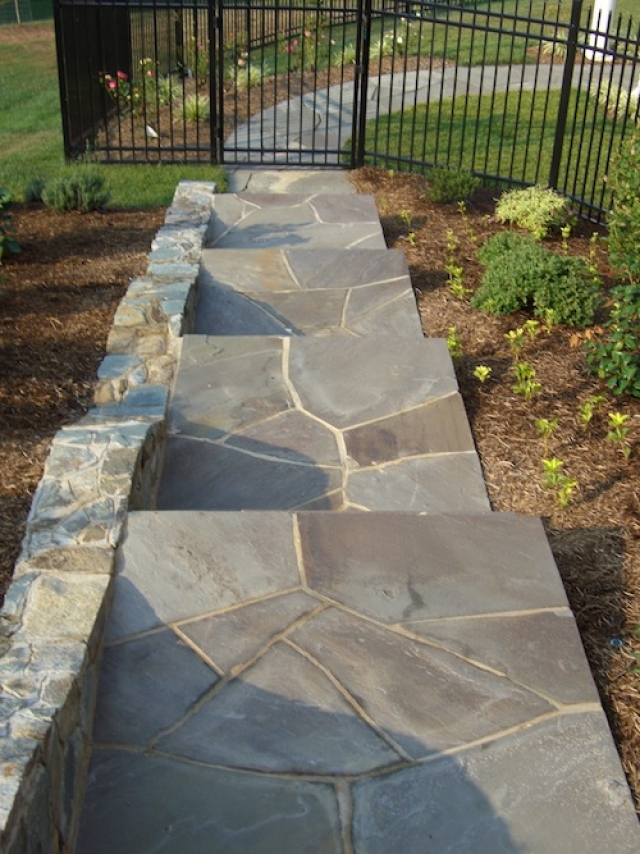The choices you make will affect the wear and tear that can occur over time as well as how long your walkway will last. You’ll need to learn about both the Mortar and Dry construction methods so that you are able to select which one will work best with your new flagstone walkway.
People often think that the terms “concrete”, “mortar” and “cement” are the same, but this is not the case. Cement is an element of mortar and concrete but it’s not the end result. Concrete is a combination of water, cement and materials like stone or sand. Mortar is created from sand, water, cement and normally hydrated lime. Hydrated lime is sticky and used with stone or brick work; it helps to bond the bricks or stones together.
Washington DC | Maryland | Virginia
Mortar Construction Method
First you’ll need to lay down a concrete bed, or simply use the old concrete walkway that’s already there. By combining sand, Portland cement and water you can make mortar very easily. Although hydrated lime isn’t an essential element in mortar it does help to: make mortar more waterproof. It also prevents cement and sand from separating, allows the mortar to become more elastic and workable and supplies mortar with less of a tendency to shrink.
The ordinary way to make mortar is two parts cement, nine parts sand and one part hydrated lime; you’ll need to mix these ingredients well before pouring in the water. Once they’re all mixed, slowly pour in the water until the mixture is able to be shaped and stand up on its own. Be careful that you don’t mix up more mortar than you’ll use in a couple of hours because the mortar will become stiff as time goes by. Spread the mortar over the concrete bed then place the flagstones on top of that. The next step is to fill in the tiny gaps between the flagstones with mortar. Be forewarned that this method requires a lot of work and is quite expensive. The finished walkway will look great.
Dry Construction Method
You won’t need a concrete bed or mortar with this method. You’ll need to dig out the path of your walkway first. Then two or three inches of tamped crushed rocks are put down with landscape fabric laid over them. The crushed rocks help to drain off water and the landscape fabric helps keep the bottom rock layer from clogging up. Two or three inches of compact sand are then spread over the landscape fabric. The flagstones are then put on top of the layer of sand. Masonry sand is brushed in between the cracks and this will help with any abnormalities in the layers of sand or gravel below the stones.
With this type of construction, your walkway will be less costly to create, long-lasting and will hold together in cold climates. It also makes it easier for taking up flagstones in case there is a need to get to utility lines or water pipes; damaged stones can be replaced easily as well. But, over time, the masonry sand between the flagstones will wash away and need to be replaced. Another thing that needs to be considered is that this dry method could cause the flagstone walkway to heft up more than a mortared flagstone walkway, especially if you live in a region that is prone to earthquakes.
There are numerous considerations you’ll need to think about before installing a flagstone walkway: if you want your walkway to look natural, use stones that are round with rough edges; if you want a compact look, maybe choose stones that are rectangular in shape and place them securely together; think about whether you want your home to appear taller and if so put your walkway closer to the house; if you’re joining the walkway to a porch or driveway, you’ll want to use bigger stones because these areas have more foot traffic.
